THREE-DIMENSIONAL FIGURES WORKSHEET
Subscribe to our ▶️ YouTube channel 🔴 for the latest videos, updates, and tips.
Question 1 :
What is the relationship between the numbers of vertices V, edges E, and faces F of a polyhedron ?
Question 2 :
List the numbers of vertices, edges, and faces of each Platonic solid.
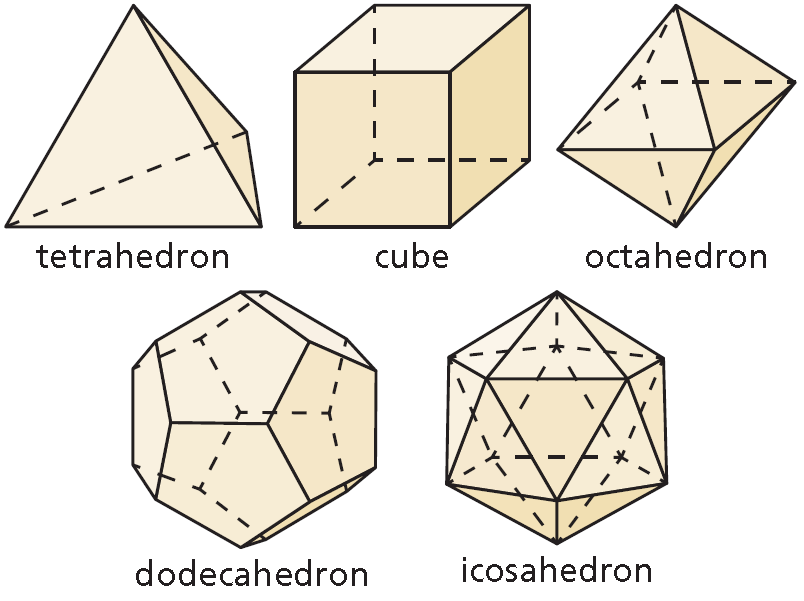
Question 3 :
Tell whether each solid is a polyhedron. If it is, name the polyhedron.

Question 4 :
Describe the shape formed by the intersection of the plane and the solid.
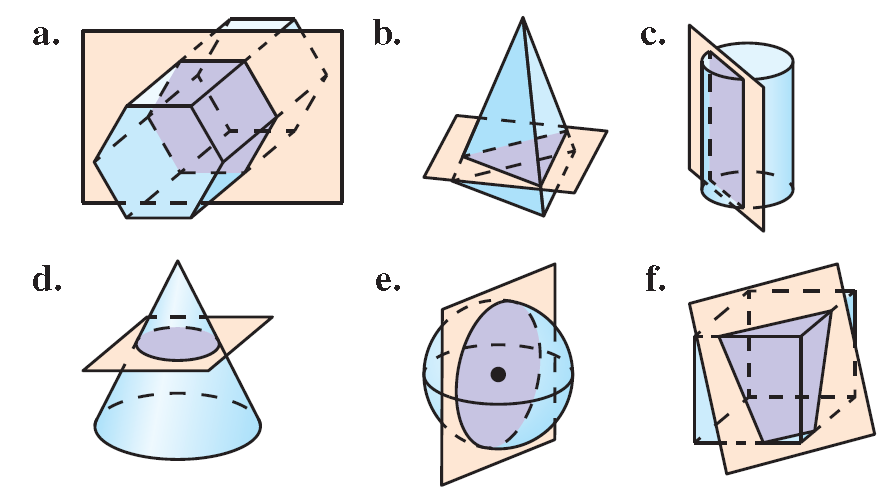
Question 5 :
Sketch the solid produced by rotating the figure around the given axis. Then identify and describe the solid.
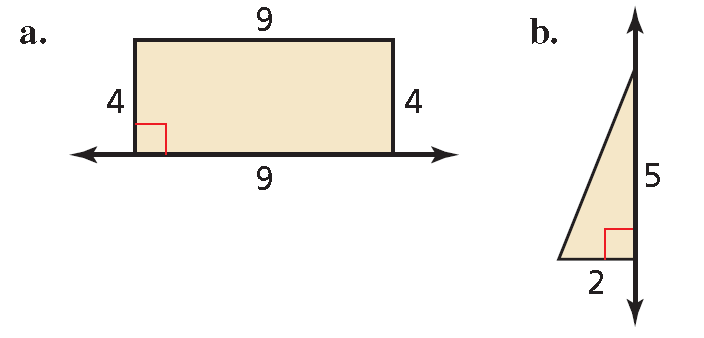
Question 6 :
Give an example and list the properties for each of the following prisms/pyramids.
Triangular Prism
Rectangular Prism
Cube
Square Pyramid
Triangular Pyramid
Question 7 :
Give an example and list the properties for each of the following figures with curved faces.
Cylinder
Cone
Sphere

Question 1 :
What is the relationship between the numbers of vertices V, edges E, and faces F of a polyhedron ?
Answer :
A polyhedron is a solid that is bounded by polygons, called faces.
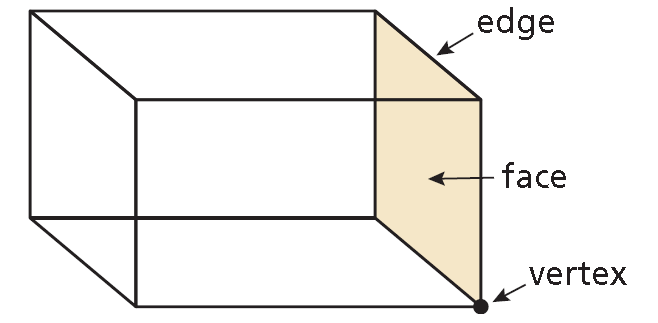
• Each vertex is a point.
• Each edge is a segment of a line.
• Each face is a portion of a plane.
Question 2 :
List the numbers of vertices, edges, and faces of each Platonic solid.

Answer :
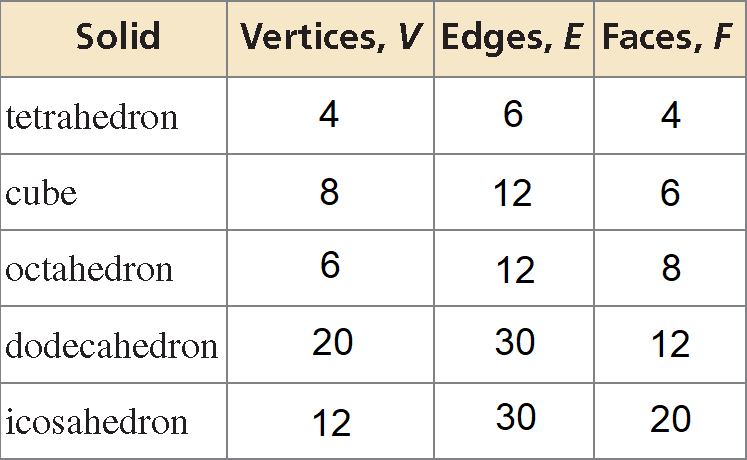
Question 3 :
Tell whether each solid is a polyhedron. If it is, name the polyhedron.

Answer :
(a) The solid is formed by polygons, so it is a polyhedron. The two bases are congruent rectangles, so it is a rectangular prism.
(b) The solid is formed by polygons, so it is a polyhedron. The base is a hexagon, so it is a hexagonal pyramid.
(c) The cone has a curved surface, so it is not a polyhedron.
Question 4 :
Describe the shape formed by the intersection of the plane and the solid.

Answer :
(a) The cross section is a hexagon.
(b) The cross section is a triangle.
(c) The cross section is a rectangle.
(d) The cross section is a circle.
(e) The cross section is a circle.
(f) The cross section is a trapezoid.
Question 5 :
Sketch the solid produced by rotating the figure around the given axis. Then identify and describe the solid.

Answer :
(a) The solid is a cylinder with a height of 9 and a base radius of 4.
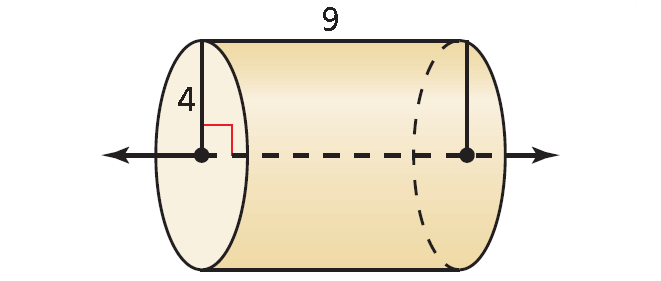
(b) The solid is a cone with a height of 5 and a base radius of 2.
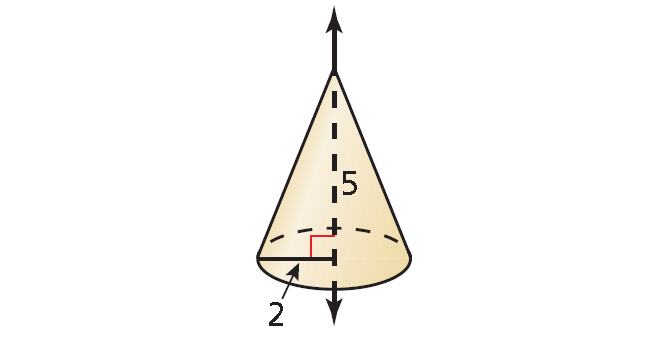
Question 6 :
Give an example and list the properties for each of the following prisms/pyramids.
Triangular Prism
Rectangular Prism
Cube
Square Pyramid
Triangular Pyramid
Answer :
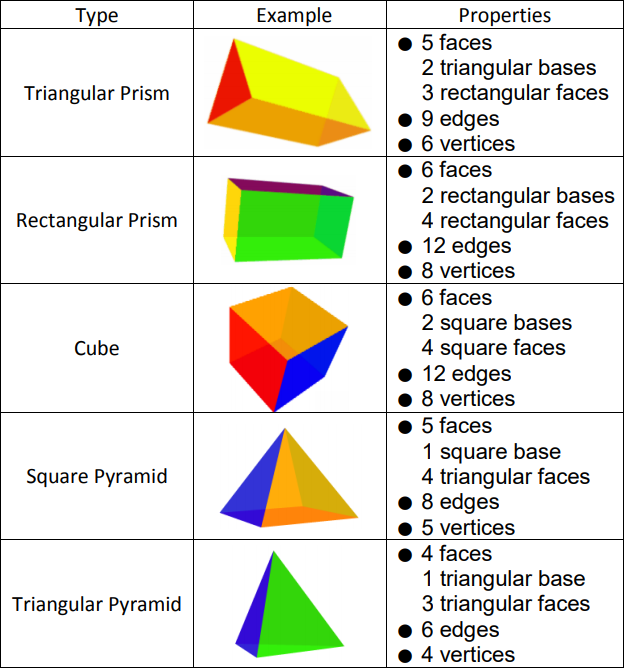
Question 7 :
Give an example and list the properties for each of the following figures with curved faces.
Cylinder
Cone
Sphere
Answer :
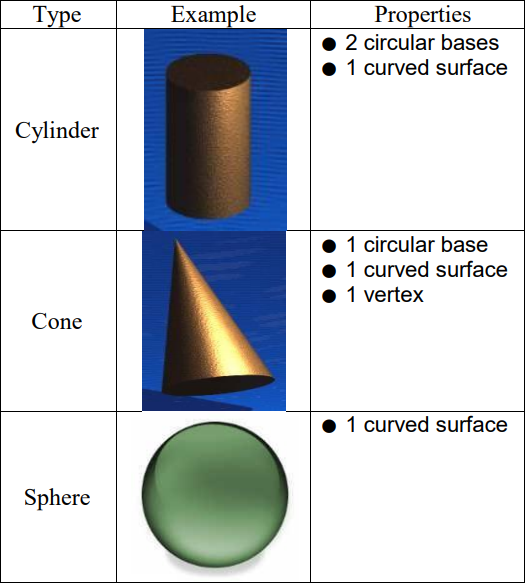
Subscribe to our ▶️ YouTube channel 🔴 for the latest videos, updates, and tips.
Kindly mail your feedback to v4formath@gmail.com
We always appreciate your feedback.
About Us | Contact Us | Privacy Policy
©All rights reserved. onlinemath4all.com

Recent Articles
-
10 Hard SAT Math Questions (Part - 4)
Jan 05, 26 06:56 PM
10 Hard SAT Math Questions (Part - 4) -
10 Hard SAT Math Questions (Part - 3)
Jan 05, 26 06:34 PM
10 Hard SAT Math Questions (Part - 3) -
10 Hard SAT Math Questions (Part - 43)
Jan 04, 26 01:38 AM
10 Hard SAT Math Questions (Part - 43)

